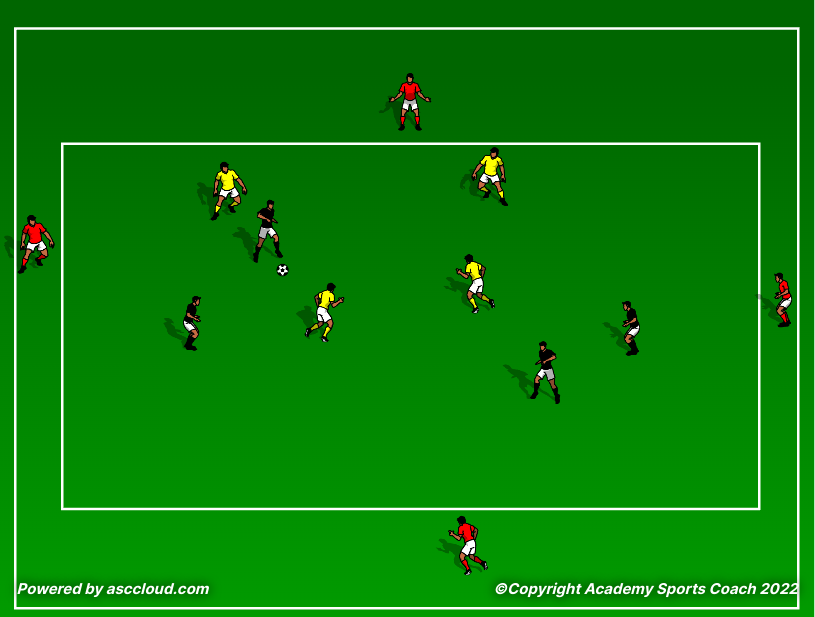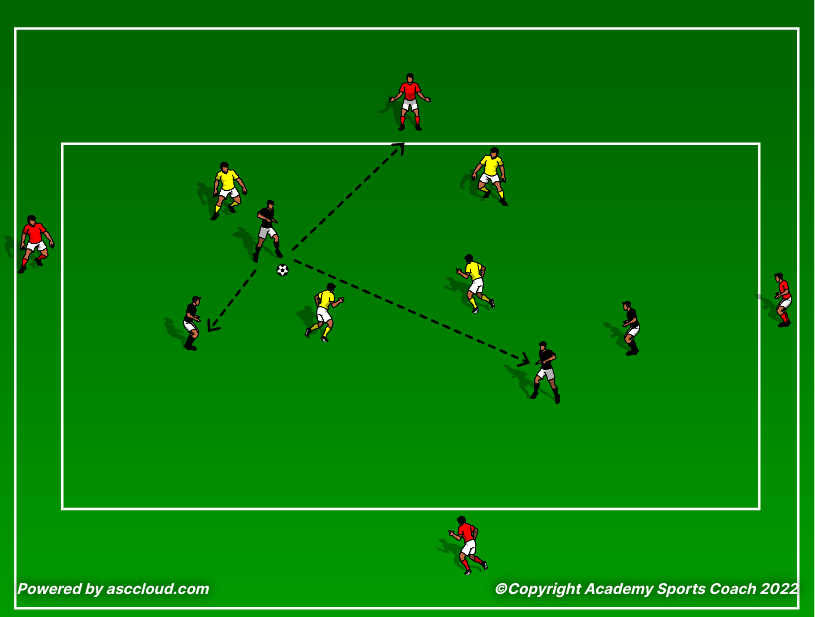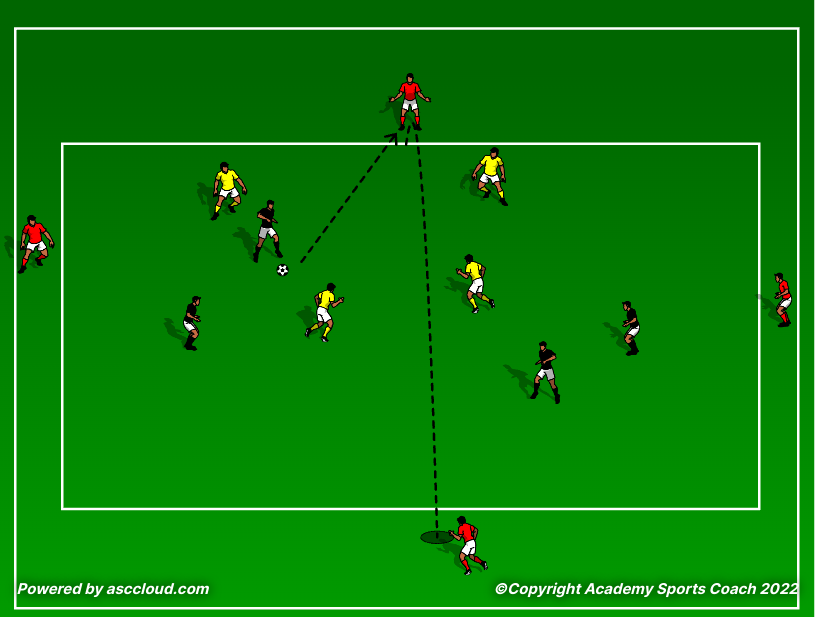By Matt Carroll -
One of the most effective counter attacking tactics to utilize is the back-and-through pass from a target man. It is also useful for relieving pressure after a defensive win. Also, when a winger gets caught by an outside back and they want to change direction through an outside back. The back and through has a diverse range of utilization, yet, at youth levels a lot of players are hesitant to go forward to go backwards because the inherent risk passing back to your own goal has. To help teach the usefulness, as well as the appropriate weight of the B and T, the back and through Rondo can be very useful.

The drill starts with a large box with 4 neutral players on each edge of the box. Inside the box is a 4v4 with two teams.The box should be wide enough that when a ball is played from side to side it would require it to be played in the air, over the head of the opposition. The ball begins with a 50/50 and the team that wins it starts in possession. The goal of the team is to find situations where they can play to one of the 4 neutral players in a way that allows them an open avenue to play an aerial cross to the player on the opposite side of the box. If the team is able to complete this back and through interaction, they are awarded one point. It is the coach's decision to then change possession or allow the attacking team to retain possession until they lose it.


Key factors to focus on in this drill is 1. The layoff pass: The pass back to go forward should be played in a way that it can be quickly drilled for the cross. The player doesn’t want to ping it at the crosser, since they will likely need to take a touch to control the pass, which will slow down the effectiveness of drawing the opposition in. 2. The body shape of the crosser: the crosser will want to be in a position where they can see both the passer and the receiver, and one in which they can play one time if possible. 3. The depth: Another thing to consider is the distance between the original passer and the crosser, if they are too close the defender will be able to jump the pass and put the crosser under, or worse steal the ball and go on an attack.
By Matt Carroll -


